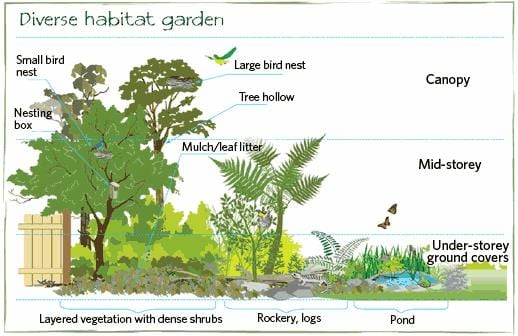Hilton Head Landscapes Can Be Fun For Anyone
Wiki Article
A Biased View of Hilton Head Landscapes
Table of ContentsThe Best Strategy To Use For Hilton Head Landscapes9 Easy Facts About Hilton Head Landscapes ExplainedThe Best Strategy To Use For Hilton Head LandscapesThe Greatest Guide To Hilton Head LandscapesThe 8-Second Trick For Hilton Head LandscapesThe smart Trick of Hilton Head Landscapes That Nobody is Talking AboutWhat Does Hilton Head Landscapes Do?
Line develops all types and patterns and can be used in a range of means in the landscape. Line in the landscape is produced by the edge in between two products, the overview or shape of a type, or a lengthy linear attribute. Lines are a powerful device for the designer due to the fact that they can be used to produce an unlimited selection of shapes and kinds, and they control motion of the eye and the body.

Lines in the landscape. The residential or commercial properties of lines figure out how people respond to the landscape, both emotionally and literally.
5 Simple Techniques For Hilton Head Landscapes
Straight lines are usually discovered in hardscape edges and material. Bent lines develop a casual, all-natural, kicked back character that is linked much more with nature and unbalanced equilibrium. Rounded lines move the eye at a slower pace and add enigma to the area by creating concealed views. Vertical lines relocate the eye up, making a space feel bigger.Vertical lines in the landscape consist of tall, narrow plant product, such as trees, or tall structures, such as an arbor or a bird house on a pole. Straight lines move the eye along the ground plane and can make a space really feel bigger. Low lines are extra subdued and create a sensation of remainder or repose.
The 8-Second Trick For Hilton Head Landscapes
Reduced lines are created by reduced yard wall surfaces, pathways, and brief bushes. Lines are used to attract types on a plan. In strategy view, they define plant beds and hardscape locations. Lines are also produced by the vertical types of developed features and plant product. There are 3 primary line kinds that develop form in the landscape: bedlines, hardscape lines, and plant lines.Bedlines attach plant material to your home and hardscape because the eye adheres to the line, moving the stare via the landscape. Hardscape lines are created by the side of the hardscape, which delineates the developed structure. Line can also be produced by lengthy and slim materials, such as a fencing or wall surface.
Not known Details About Hilton Head Landscapes
Type is discovered in both hardscape and plants, and it is typically the leading aesthetic component that spatially arranges the landscape and typically figures out the style of the yard. The kind of frameworks, plant beds, and garden accessories also identifies the overall form theme of the yard. Official, geometric forms consist of circles, squares, and polygons.Plants develop kind in the garden via their lays out or silhouettes, yet kind can also be defined by a void or adverse area in between plants - Landscapers near me (https://www.pageorama.com/?p=h1tnhdlndscps). Circles can be cycles, or they can be divided right into half circles or circle sections and incorporated with lines to develop arcs and tangents
See This Report on Hilton Head Landscapes
Circles are a solid style form due to the fact that the eye is always drawn to the facility, which can be used to stress a focal point or connect other types. Round kinds in hardscape and yard panels.The square kind can likewise be segmented and used consistently to create a grid pattern. Unlike circles, squares are stronger on the brink, which can be aligned or overlapped to create distinct patterns and more complicated kinds. see Polygons are many-sided kinds with straight edges. Triangles, as an example, are three-sided polygons.
Meandering lines often mimic the natural course of rivers or streams and can be called smooth lines with deeply curved undulations. Meandering lines (Number 3) function well for pathways, plant bedlines, and completely dry stream beds. Twisting lines can include interest and enigma to a garden by leading visitors around edges to discover brand-new sights and spaces.
What Does Hilton Head Landscapes Do?

Usual plant types are well established and standard, as form is the most consistent and well-known characteristic of plants. Type can also be developed with the massing of plants, where the total mass produces a various form than a private plant.
A highly contrasting kind has to be used with careone or more job well as a focal factor, however way too many wreak havoc. Natural plant kinds, rather than over-trimmed types, should develop the bulk of the structure. The significance of general form is basically reliant on the checking out perspectivethe kind of a tree can show up rather different to a person standing under the canopy versus viewing the tree from a range in an open field.
Hilton Head Landscapes Can Be Fun For Anyone
Plant kinds also produce and specify the space or open areas in between the plants, creating either convex or concave types in the gaps. High-arching tree branches generally produce a concave open room under the branches, and a round canopy with reduced branches fills up the space to develop a convex type outdoors space under the tree.
Report this wiki page